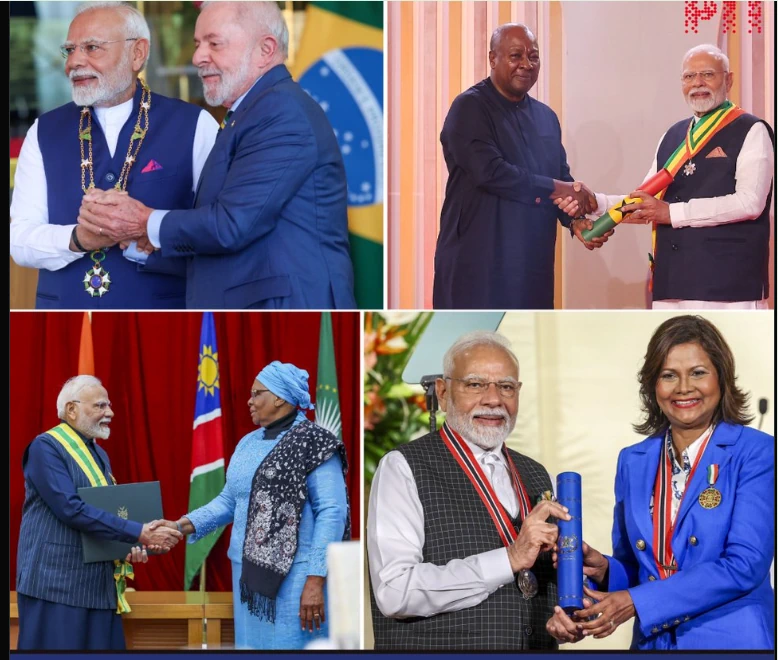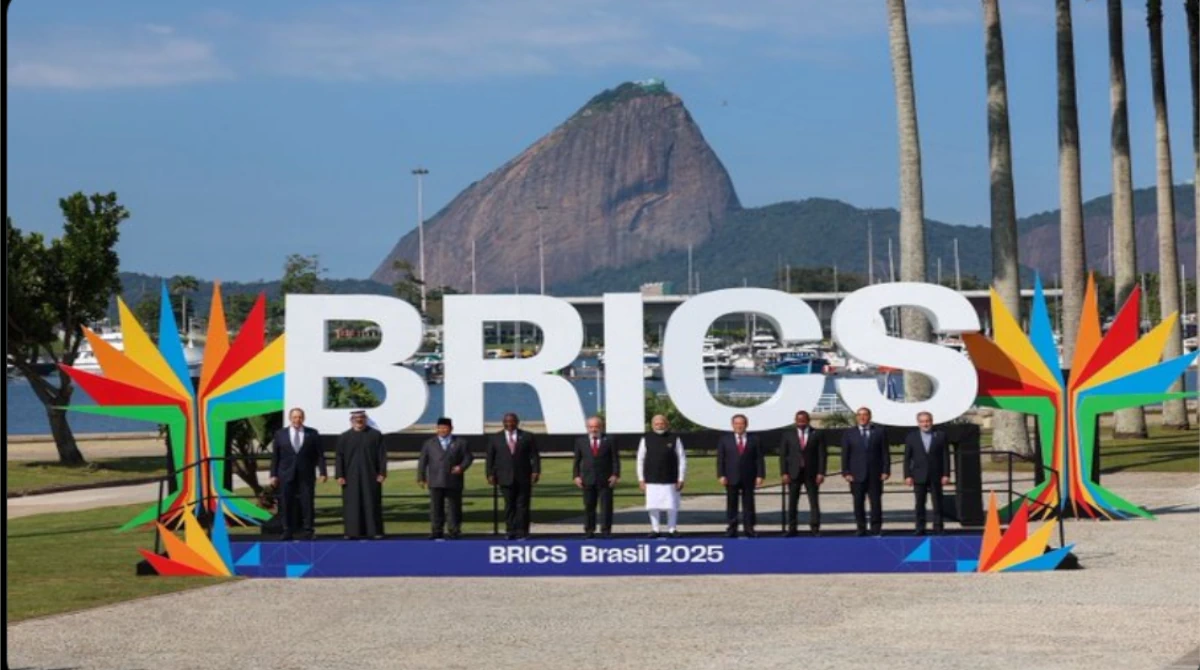Introduction

Image via twitter
What India Gets from PM Modi’s July 2025 Diplomatic Tour to Ghana, Trinidad, Argentina, Brazil, and Namibia
Prime Minister Narendra Modi’s July 2025 visit to Ghana, Trinidad & Tobago, Argentina, Brazil, and Namibia was more than a ceremonial global engagement—it was a strategically crafted mission to secure India’s long-term economic, technological, energy, and geopolitical interests. Spanning Africa, the Caribbean, and Latin America, this five-nation diplomatic tour yielded tangible outcomes that will significantly boost India’s global positioning, economic resilience, and developmental roadmap.
Let’s break down what India gains from each country visited—and why this tour matters more than meets the eye.
1. Ghana: Gateway to Africa’s Digital and Agri-Economy
What India Gets:
- Access to West African markets via trade deals and startup incubators.
- A strategic digital innovation hub in Ghana to expand India’s tech diplomacy in Africa.
- Collaboration in agriculture R&D, boosting food security cooperation.
- Greater visibility for Indian fintech and edtech startups across African youth platforms.
Why It Matters:
Ghana serves as India’s launchpad into Western Africa, a region rich in natural resources and young consumers. By investing in digital infrastructure and agriculture innovation, India strengthens its economic diplomacy and opens new export markets for Indian goods and services.
2. Trinidad & Tobago: Strengthening Diaspora Bonds and Energy Ties
What India Gets:
- Access to LNG and hydrocarbons, diversifying India’s energy import partners.
- Expansion of Indian pharma exports into the Caribbean health sector.
- Implementation of India’s digital health tools (e.g., Co-WIN platform).
- Cultural soft power boost via Indian Heritage Center and diaspora engagement.
Why It Matters:
This visit deepens India’s connection with its Indo-Caribbean diaspora, a powerful conduit for influence and investment. Energy cooperation with T&T helps reduce over-dependence on Middle East oil, while pharmaceutical exports and healthcare tech become new avenues for Indian innovation abroad.
3. Argentina: Lithium and Green Energy Goldmine
What India Gets:
- Direct access to lithium reserves, critical for EV batteries and energy storage.
- Potential joint ventures in battery manufacturing and clean energy tech.
- Cultural diplomacy wins via India’s growing popularity in Latin America.
- Support for India’s global green hydrogen roadmap.
Why It Matters:
Argentina is part of the “Lithium Triangle”—and this visit ensures India isn’t left out of the EV revolution. The deals made here secure India’s raw material supply chains, and position Indian companies to lead in battery innovation and green technology exports.
4. Brazil: Fintech, Innovation, and BRICS Expansion
What India Gets:
- Fintech interoperability through Brazil’s adoption of India’s UPI-like systems.
- A new Innovation Hub for academic and startup collaboration.
- Support for UNSC reforms and India’s broader multilateral agenda.
- Shared leadership in BRICS+, boosting India’s role in South-South cooperation.
Why It Matters:
Brazil is a regional power and BRICS heavyweight. The India-Brazil digital payment and cybersecurity MoUs give India a dominant role in shaping the fintech future of Latin America. The tour also boosts India’s credibility as a rule-shaper in global governance institutions.
5. Namibia: Strategic Depth in Defense, Space, and Conservation
What India Gets:
- Defense training and security cooperation, especially in anti-poaching and intelligence.
- Expansion of India’s space diplomacy, using ISRO satellites for African development.
- Strengthened ecological research on cheetah conservation and desert ecology.
- Cultural soft power via return of Indian artifacts and expanded scholarships.
Why It Matters:
Namibia extends India’s strategic presence in Southern Africa, where China has a strong footprint. Defense and space cooperation cement India’s role as a trusted technology and training partner. Conservation collaboration strengthens India’s global environmental leadership credentials.
Strategic Summary: What India Gains Overall
| Sector | Gains from Tour |
|---|---|
| Energy Security | LNG from Trinidad, lithium from Argentina, green hydrogen R&D |
| Technology | UPI expansion in Brazil, digital hubs in Ghana, Co-WIN adoption |
| Trade & Exports | New markets for Indian pharma, edtech, agritech, and textiles |
| Geopolitics | BRICS influence, UNSC reform support, multilateral institutional backing |
| Soft Power | Diaspora engagement, cultural centers, youth exchange programs |
| Defense & Space | Namibia cooperation in defense training and satellite data exchange |
| Climate & Ecology | Conservation programs, sustainable development hubs |
PM Modi’s Vision in Action: Making the World India-Ready
This tour reflects PM Modi’s larger foreign policy framework:
- Secure strategic resources for India’s economic future (lithium, energy).
- Expand India’s soft power using culture, education, and diaspora connections.
- Project India as a digital and developmental partner for the Global South.
- Counterbalance geopolitical rivals like China through credible, people-centric diplomacy.
By forming partnerships based on equality, mutual respect, and innovation, India positions itself as a reliable alternative to Western and Chinese models of development cooperation.
Final Thoughts: A Tour That Redefines India’s Global Role
PM Modi’s July 2025 diplomatic tour was not just ceremonial—it was strategic, future-driven, and economically pragmatic. In an era of global realignment, India has placed itself at the crossroads of digital innovation, energy transition, ecological conservation, and South-South cooperation.
From African deserts to Latin American lithium fields, India is building a global footprint rooted in collaboration, sustainability, and shared prosperity. This five-nation visit not only reaffirms India’s global rise but also ensures it is better prepared for the challenges and opportunities of the 21st century.

